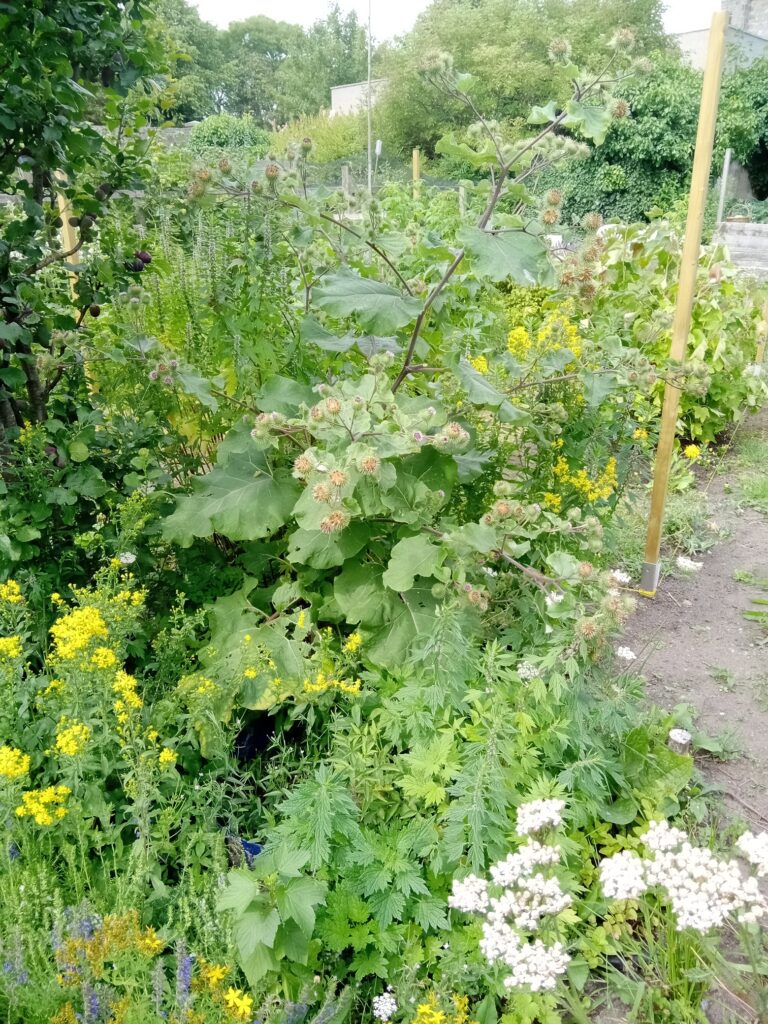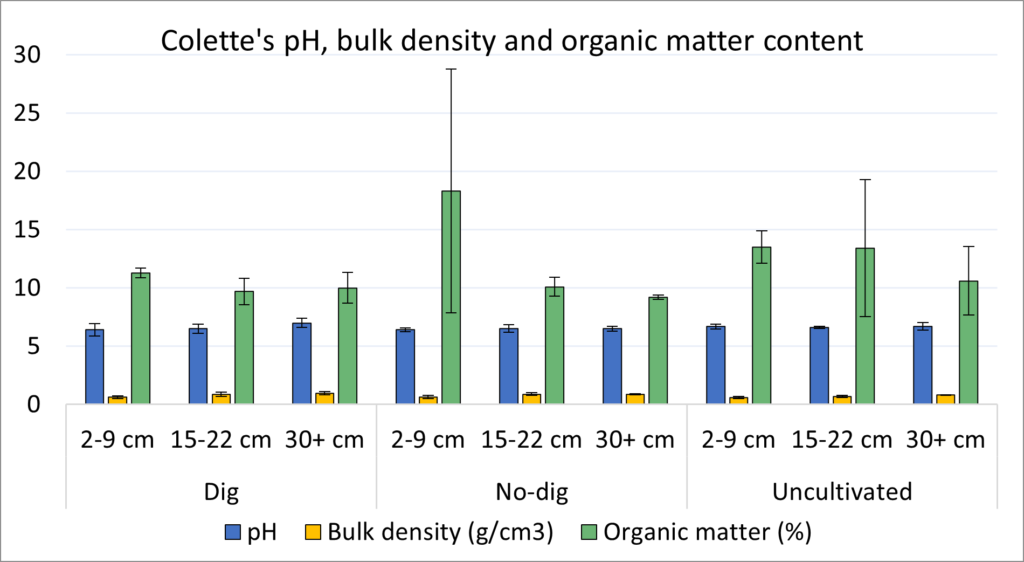Colette explains her set up and has some alternative views

Background
Colette was allocated her current plot in 2017, but has been cultivating for over 15 years. Her first winter was busy with clearing work as the site hadn’t been tended for 2 years. After training in herbology at the Royal Botanic Garden in Edinburgh, Colette had a good idea about what she wanted to do with her plot. She enjoys outreach about growing medicinal herbs and has been active in Aberdeen’s 2021 and 2022 Community Garden Festivals and other events.
Produce
The first thing to be planted were raspberry canes in a fruit cage which Colette revamped from the previous keeper. After limited success, she transitioned to red currents which have fared better. Her other traditional allotment crops include blackcurrants, parsley, potatoes, spinach, peas, sprouts, apples, plums and rhubarb, but most of the plot is dedicated to her passion for medicinal herbs.
Soil and allotment maintenance
As the Nellfield2 site backs onto houses, some parts of the plot are often in shade. Colette was strategic in assessing areas of sun/shade, wind and the topography of her land before deciding what to plant where. One of her first actions was to test the soil pH and get a feel for its texture. She was eager to plant a type of lavender (Lavandula angustifolia) that likes a neutral to alkaline environment and free-draining soil. After discovering her soil was quite acidic, she selected a sunny spot to dig a trench to fill with lime chippings into to amend the soil before planting.
In her early days with the allotment, Colette experienced intruders jumping over the wall, so installed an effective spiky plant deterrent system with bramble, hawthorn, berberis and nettles. She has now built up more beds and established a small pond in the lowest aspect of the plot so she can grow marshmallow, bog myrtle and generally increase the diversity of what she can grow. This year alone she had added another 30 taxa to her plot, which helps her give interesting workshops and tours of her site. Over the years she has added compost to build the water holding capacity of the soil, as it initially had a low organic matter content. She adds homemade compost and bought farmyard manure in winter, and adds lime to selected areas for specific herbs in autumn. No artificial chemicals are ever added to the plot.
A healthy soil to Colette is “one that smells good”, is pesticide free, and is “living”. A robin coming down to disturbed soil is a good sign. While she does feel the need to pander to some non-native herb species in terms of specialised environments and nutritional inputs, she find that once introduced, many medicinal herb species find their own way. Unlike many conventional allotment holders, Colette thinks more along the lines of not giving nutrients to her plants on the basis that they don’t like them or they can make them misbehave. She believes you have to give them something, but not exactly what they want, accusing her Saponaria (soapwort) of becoming a thug.
Although Colette has a few different varieties of lavender, as a medicinal herbalist, she finds it important to be very specific about which species she grows, buying her herbs from a specialised nursery she trusts on the Black Isle. With a strong scientific background, she balances a scientific and pragmatic approach with an intuitive attitude, believing that when she favours a particular herb it becomes abundant, and when she goes off it, it dwindles.
Tips for new growers in North East Scotland
Colette’s advice is to try and grow indigenous species, citing the book Healing Threads for inspiration. She mostly encourages people to be intuitive and grow what they’re interested in. One thing she recommends avoiding is basil, which isn’t destined to grow outdoors in North East Scotland, despite how much people want it to.
Soil properties on Colette’s plot at Nellfield 2

(Error bars show standard deviation from the mean.)

litre of soil. (Error bars show standard deviation from the mean)

The measure mg/L (milligrams per litre) gives the same figures when converted to g/m3 (grams per meter cubed). Note that soil properties may be highly variable within a short distance and figures given are not representative of the whole allotment site.
Return to an overview of all the sites and people.